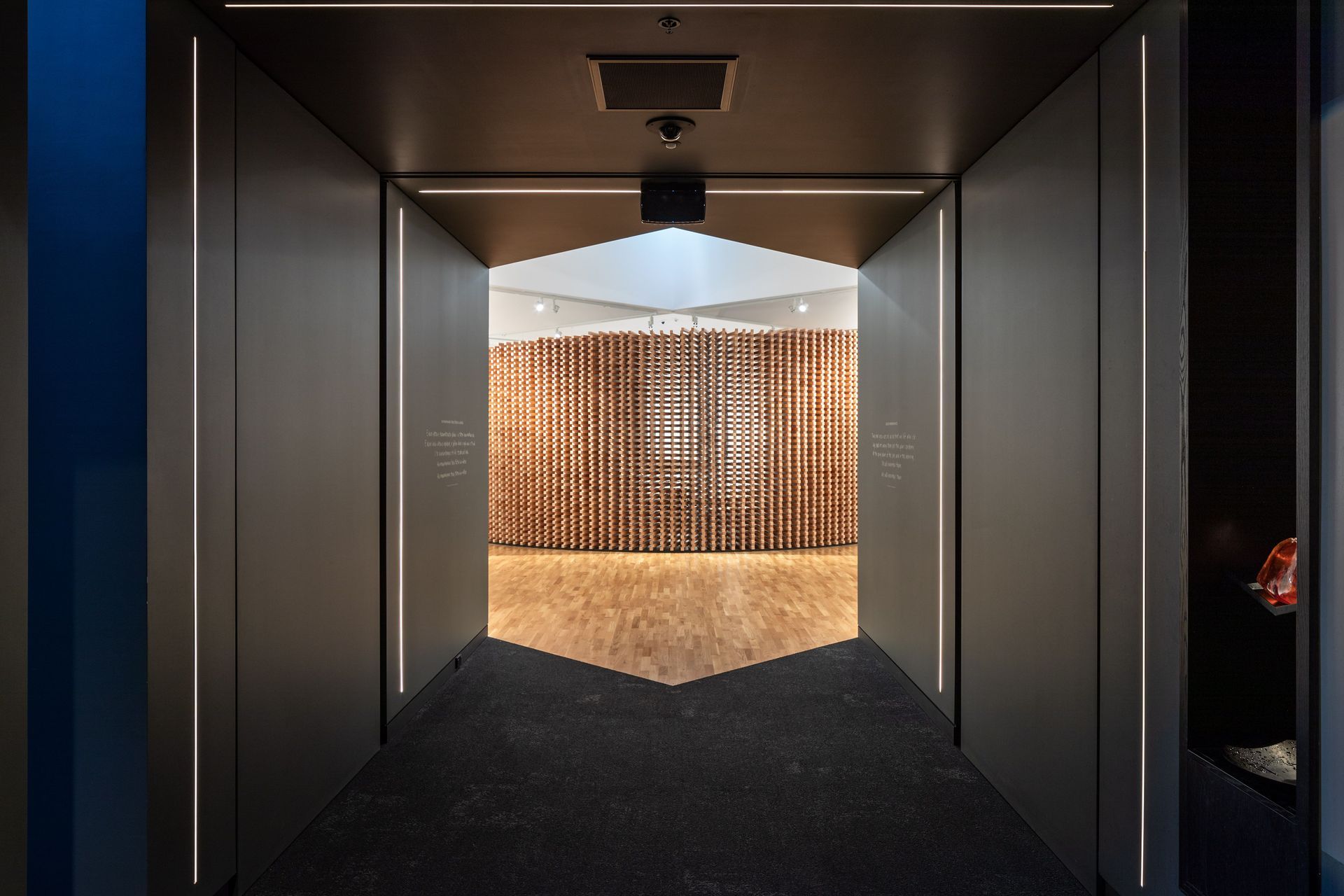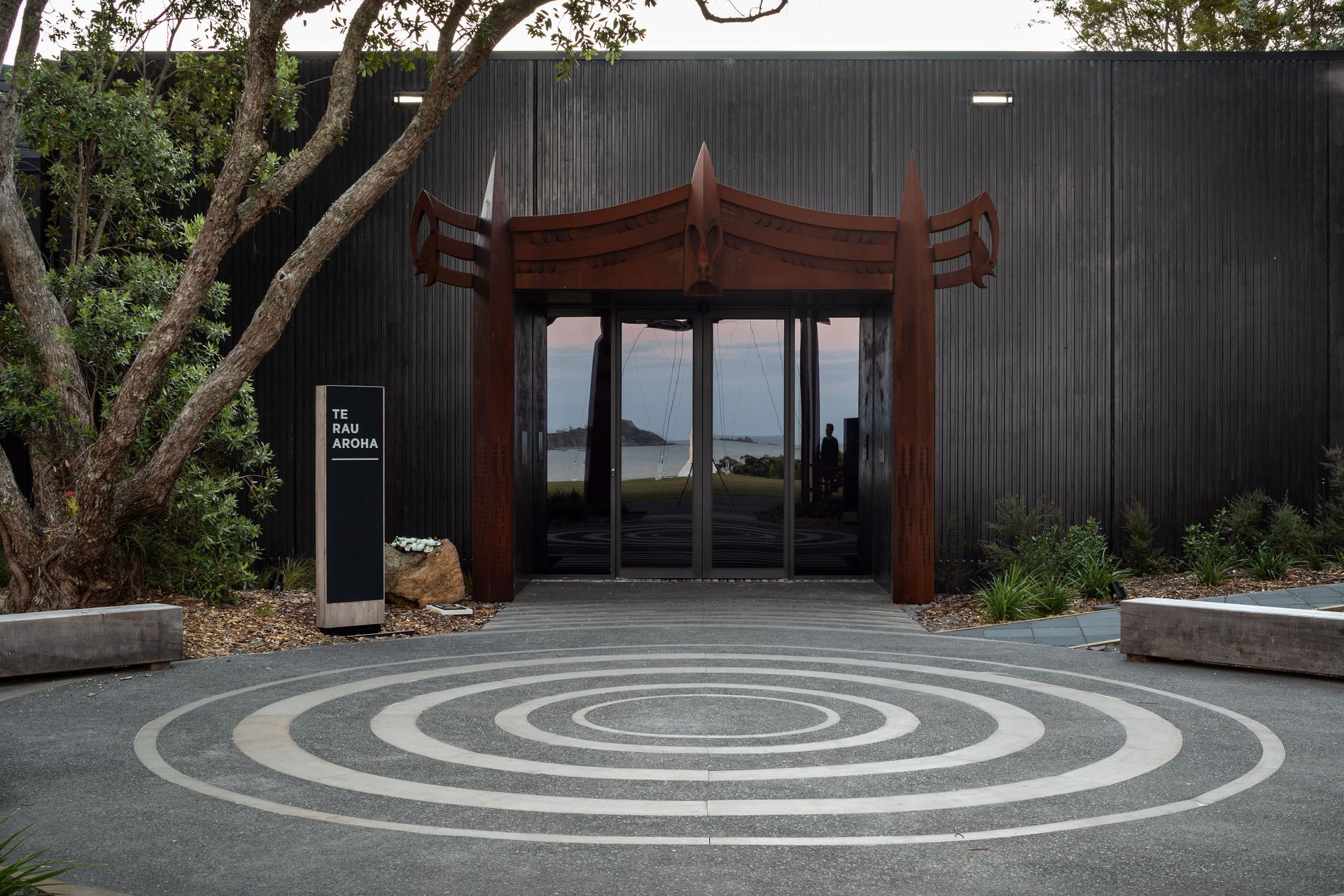Te Rau Aroha: commemorating the Māori Battalion through architecture

In the final months of 1939, in the wake of New Zealand's formal declaration of war on Germany, Sir Āpirana Ngata and other Māori MPs succeeded in their bid to form a military unit entirely made up of Māori volunteers. Their aim was to replicate the efforts of the New Zealand Pioneer Battalion, a unit made up of Māori and Pacific Island soldiers who fought in Gallipoli during World War I.
By January 1940, the 28 Battalion – which later became commonly known as the Māori Battalion – had assembled in Palmerston North. After some months of training – and a ceremonial trip to commemorate the centennial of the signing of the Treaty of Waitangi – the men of the unit boarded the Aquitania en route to the United Kingdom, and war, in May 1940.
The 3,600 men who served in the Māori Battalion would go on to become the most decorated unit of the Second New Zealand Expeditionary Force during the war, fighting battles in southern Europe and North Africa. Its legacy lived on in the peacetime years following the war – and 80 years after it first sailed from Aotearoa’s shores, a museum dedicated to the battalion opened its doors on the Waitangi Treaty Grounds.

Named Te Rau Aroha: The Price of Citizenship, the museum’s centrepiece honours the fighters of the Māori Battalion of World War II, while also commemorating the Māori combatants of the Anglo-South African War (Second Boer War) and the Pioneer Battalion of World War I.
“The entire project was very sensitive, in all senses of the word,” says Grant Harris, the lead architect of Te Rau Aroha and the director of Harris Butt (HB) Architecture. “You're dealing with the issue of conflict – of Māori who served in a war that wasn’t their war, but who participated anyway as an act of service. They had a significant impact on the war wherever they went, and the cost of this was many lives.
“I view the museum as New Zealand properly acknowledging, at Waitangi, the service, commitment and sacrifice of those men who fought for this country. So we needed to address that in the architecture in a meaningful way.”
This was the main guiding principle discussed when Greg McManus, who was the Chief Executive of the Waitangi Treaty Grounds at the time, first approached Grant in 2017 with the concept of building a museum dedicated to the contribution of Māori to their country’s involvement in many theatres of war since 1840.
However, the idea of having a museum dedicated to the service of the 28 Battalion at the Treaty Grounds had been sitting in the background for some time prior to this date. Pita Paraone MNZM, as chair of the Waitangi National Trust Board, was a major influence in the conception of the vision and moving it forward. His father, Tamati Paraone was a Māori Battalion veteran and former chair of the 28 Battalion Association.
Once HB Architecture was officially engaged, the initial design process was naturally very collaborative in nature. “There was an iwi engagement process with Ngāpuhi, including members and whānau of the Māori Battalion, who were involved throughout the whole design process,” says Grant.
Once that was approved, the Historic Places Trust also had input, which made small amendments to the design. Then, it was time to build the agreed-upon design.


“In considering the design, we had a fairly pragmatic approach to the form and function of the building,” says Grant. “We started off with the thought that we were dealing with the lives and commitment of 3,600 soldiers. That number became important – it reduces down to 360°. The building was originally a circle, with each degree representing 10 men.”
Throughout the consultation process, the design gradually shifted to being more geometrical: a simple, strong form where the lines represent military formation and discipline – an apt change as the scope of the project widened to include all Māori military servicepeople rather than just the 28 Battalion.

“The building is made of precast concrete,” Grant says. “We wanted to create an envelope that was solid, enduring and protective. We mixed black oxide with concrete - and once that was polished and sealed, it created a colour that changes depending on the changing angles of the sun.
"The resulting mix of blacks, dark reds and browns evoke a worn steel effect reminiscent of the materials used by infantry like vehicles and armaments.”
The primary shade used for the exterior though, as well as the interior, was black. The front façade is sombre, dark, precise – conveying the rigidity of military precision but also emphasising the place as one of protection.
“It’s black because, well, there’s nothing particularly good or colourful about war – it’s a dark subject,” says Grant, “but we can only hope that what comes out of it is a sense of good.”


Once visitors pass through the entrance, the theme of darkness remains; they meander through a ‘black box’, which features projectors showing images and stories of the war. The museum portion of the building is dark – but the room of remembrance, which visitors reach after finishing in the museum, is filled with light, connecting the ideas of life and service.
“It’s dark from the moment you enter, and we played with limited amounts of natural light which was a nice opportunity to use light – and the lack of it – to tell the story.
“Then you enter the memorial part of the building, which is bright – we thought it was important to have the soldiers represented in a light-filled room. Everyone can see what’s going on, can understand who these people are, and can remember, celebrate and commemorate in light.
“The whole overarching idea was to directly contrast the dark imagery of war with the portrayal of the lives of the people who participated in it with light.”


Since Te Rau Aroha’s opening on Waitangi Day in 2020, it’s been a great success within the community and beyond; in spite of the lockdowns that soon followed, the following year saw thousands of visitors despite the absence of overseas tourists.
“The opening day was very special,” says Grant. “There was an expectation that hundreds of people would show up – instead it was in the four figures. For all of us who were involved from day one, it was a momentous thing to see the genuine emotion and connection people had for the project, or more importantly for the people that it commemorates.
“In the end, it wasn’t about the building or the architecture, it was about what it represented – the commemoration of those people and their whānau.
“We’re very grateful to have been entrusted with this.”

